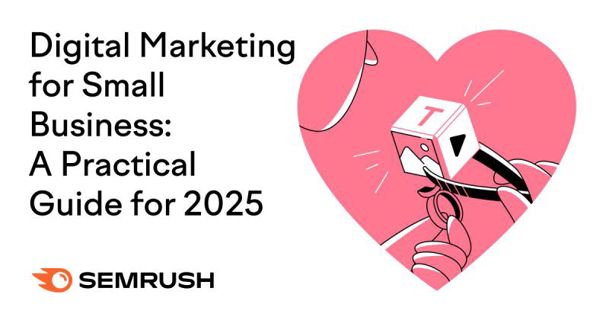
In today’s fast-paced, digital-first world, businesses must adapt to the ever-changing digital landscape to stay competitive. With the rise of online channels and the constant shift in consumer behavior, it’s more critical than ever for brands to deploy effective digital marketing strategies. But with so many tactics out there, how can businesses know which ones truly deliver results?
In this article, we’ll explore some of the most effective digital marketing tactics that, when implemented properly, can drive measurable success.
1. Search Engine Optimization (SEO): Ranking for Long-Term Success
SEO has been a staple of digital marketing for years—and for good reason. By optimizing your website and content for search engines, you increase the chances of ranking higher in search engine results pages (SERPs), attracting organic traffic that can convert into leads or sales.
Key tactics include:
On-page SEO: This includes optimizing meta tags (titles, descriptions), headers, and body content with relevant keywords.
Technical SEO: Improving website speed, ensuring mobile-friendliness, and fixing broken links.
Content Marketing: Regularly publishing valuable, informative content that answers common customer questions.
Backlink Building: Earning high-quality backlinks from authoritative websites.
When done well, SEO can provide long-term, sustainable results by increasing visibility and driving qualified traffic.
2. Pay-Per-Click (PPC) Advertising: Instant Results with Precision Targeting
While SEO focuses on organic traffic, PPC advertising, especially through platforms like Google Ads or Bing Ads, allows businesses to bid for top positions in search results. Unlike SEO, PPC delivers almost immediate visibility and traffic once your campaigns go live.
Key tactics include:
Keyword Research: Identify high-intent keywords that are likely to convert.
Ad Copy Optimization: Write compelling ad copy that includes a clear call-to-action (CTA).
Landing Page Optimization: Ensure that the landing page aligns with the ad’s promise and offers a seamless user experience.
Remarketing: Target visitors who’ve previously engaged with your site but haven’t converted yet.
PPC campaigns, when done right, can deliver immediate ROI with a high degree of targeting precision.
3. Email Marketing: Nurturing Leads and Building Relationships
Email marketing continues to be one of the most effective channels for driving conversions, especially for businesses with an existing customer base or an email list. It's not only about sending promotional emails but nurturing relationships with personalized content.
Key tactics include:
Segmentation: Tailor messages based on demographics, behavior, or past interactions.
A/B Testing: Test subject lines, content, and CTA buttons to optimize open rates and click-through rates.
Personalization: Use dynamic content to address customers by name and send them relevant offers.
Drip Campaigns: Set up automated email sequences to nurture leads and guide them through the sales funnel.
With an effective email strategy, businesses can maintain consistent engagement, retain customers, and drive repeat business.
4. Social Media Marketing: Engaging with Your Audience Where They Are
Social media platforms like Facebook, Instagram, Twitter, LinkedIn, and TikTok offer businesses an unparalleled opportunity to engage directly with their audience. Social media marketing isn’t just about pushing sales; it’s about creating meaningful interactions that build trust and loyalty.
Key tactics include:
Content Variety: Mix up your content with images, videos, polls, and stories to keep your audience engaged.
Social Proof: Share customer testimonials, reviews, and user-generated content to build credibility.
Influencer Partnerships: Collaborate with influencers who resonate with your target audience to expand reach.
Paid Social Ads: Leverage the powerful targeting options available through Facebook and Instagram ads to reach specific demographics or behaviors.
Social media marketing helps you maintain a two-way conversation with your audience, which can boost brand loyalty and increase conversions.
5. Content Marketing: Creating Value to Attract and Retain Customers
Content marketing focuses on creating valuable, relevant content that educates, informs, or entertains your target audience. By providing valuable information, you can establish your brand as an authority and guide customers along their buying journey.
Key tactics include:
Blogging: Consistently post articles that answer common customer questions or solve their problems.
Video Content: Engage audiences with product demos, tutorials, or behind-the-scenes looks at your business.
Infographics: Share visually appealing data that makes complex information easy to digest.
Podcasts: Reach an audience that prefers audio content during their commute or workouts.
When done right, content marketing builds trust, strengthens brand awareness, and ultimately drives conversions.
6. Influencer Marketing: Leveraging Trust to Drive Sales
Influencer marketing is no longer just a trend. It’s become a powerful way to reach target audiences and drive real results, especially on platforms like Instagram, TikTok, and YouTube. Consumers trust influencers, often more than traditional ads, because influencers have built credibility with their followers.
Key tactics include:
Micro-Influencers: Partner with smaller influencers who have highly engaged, niche audiences.
Authenticity: Ensure that influencers genuinely align with your brand values for more authentic promotion.
Trackable Campaigns: Use unique promo codes or affiliate links to track ROI from influencer campaigns.
With the right influencer, you can extend your brand’s reach and convert followers into paying customers.
7. Conversion Rate Optimization (CRO): Turning Traffic into Revenue
Getting traffic to your website is just the first step; converting that traffic into leads or customers is where the magic happens. Conversion rate optimization (CRO) focuses on improving the performance of your website to turn more visitors into customers.
Key tactics include:
A/B Testing: Test different versions of your website’s key elements (e.g., CTA buttons, forms, images) to see which performs best.
Simplifying the User Experience (UX): Make your website easy to navigate, especially on mobile devices.
Speed Optimization: Faster websites lead to lower bounce rates and better conversion rates.
Clear Calls to Action: Ensure that CTAs are noticeable and guide visitors toward the next step in the funnel.
CRO ensures that the traffic you’ve worked hard to generate actually translates into measurable business results.
8. Video Marketing: Captivating Audiences with Visual Content
Video content has exploded in popularity across platforms like YouTube, Instagram, and TikTok. It's a powerful tool for capturing attention and conveying your brand’s message in an engaging, memorable way.
Key tactics include:
Tutorials and Demos: Show how your products or services work and highlight their benefits.
Live Streams: Engage in real-time with your audience, answering questions or showcasing new products.
Short-Form Content: Use TikTok or Instagram Reels to quickly capture attention and drive engagement.
Video content can increase brand awareness, build trust, and drive conversions, especially when optimized for each platform.
Conclusion
Digital marketing is constantly evolving, but the tactics mentioned above remain tried-and-true methods for driving real, measurable results. Whether you’re looking to build long-term organic traffic with SEO, generate immediate leads with PPC, or nurture relationships through email marketing, there are countless strategies at your disposal. The key is to continuously test, analyze, and adapt your approach based on your audience’s needs and preferences.
RESOURCE : https://technologicalinc.com/digital-marketing
0 comments
Be the first to comment!
This post is waiting for your feedback.
Share your thoughts and join the conversation.
